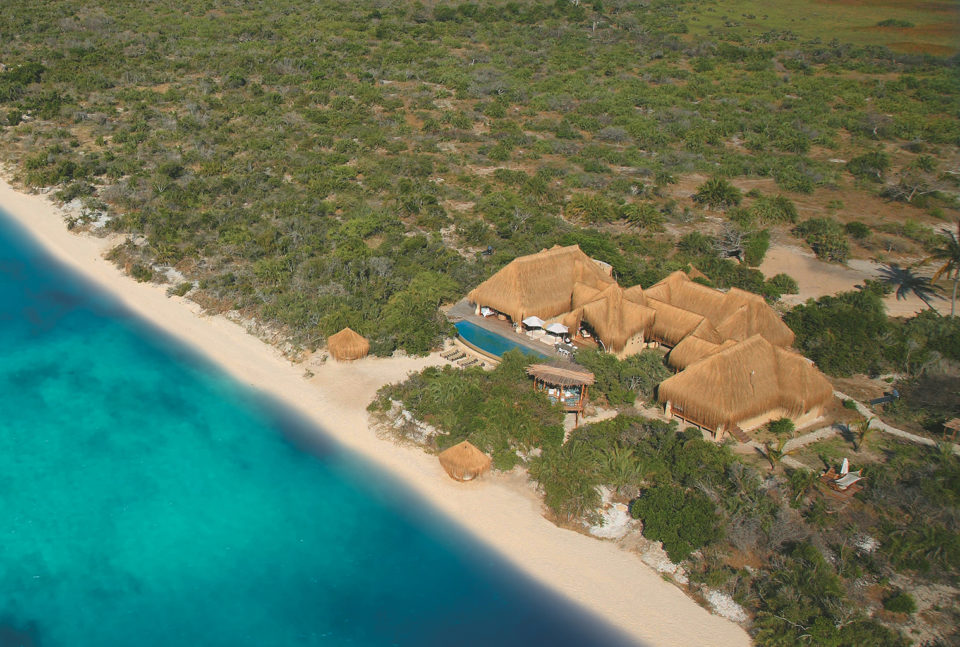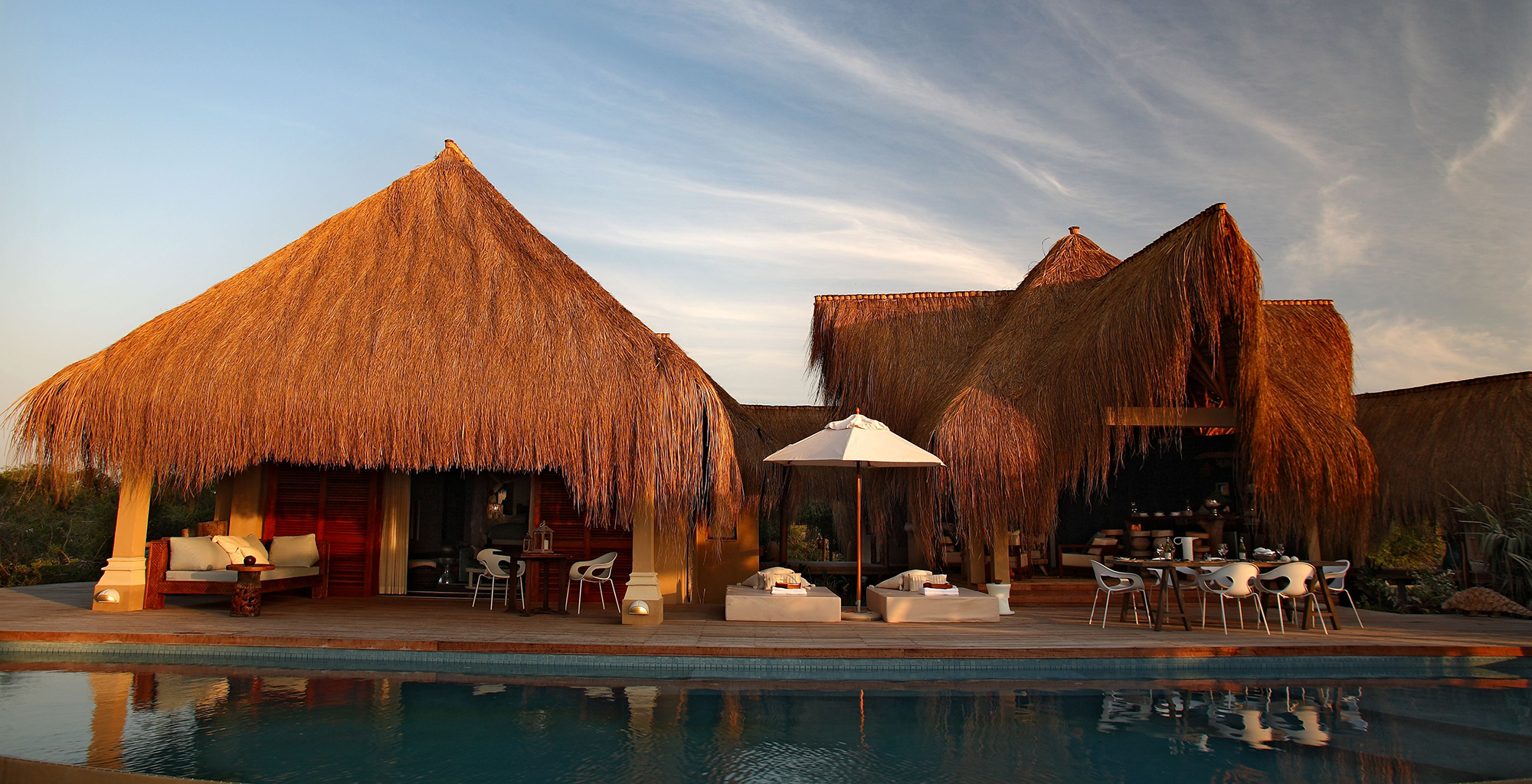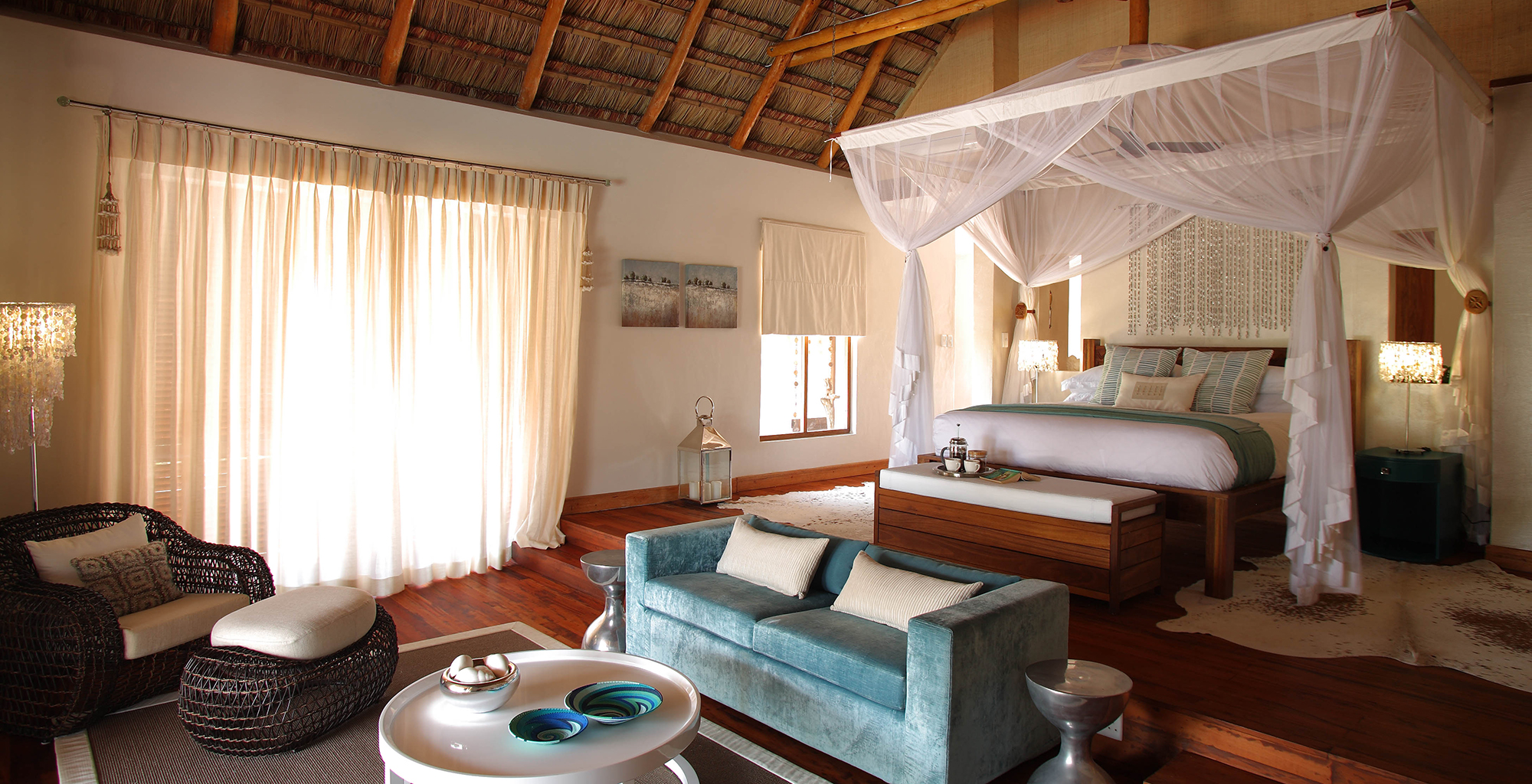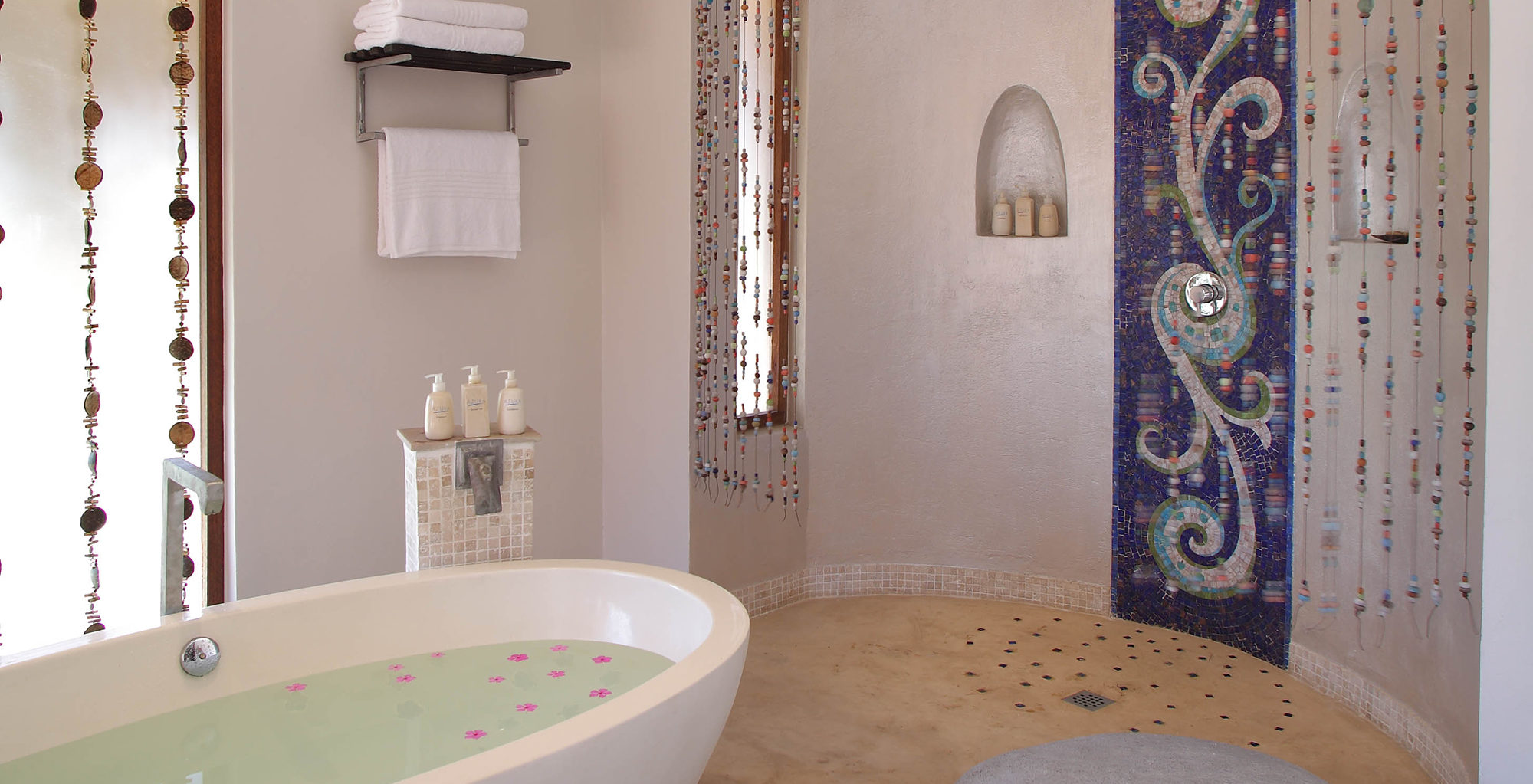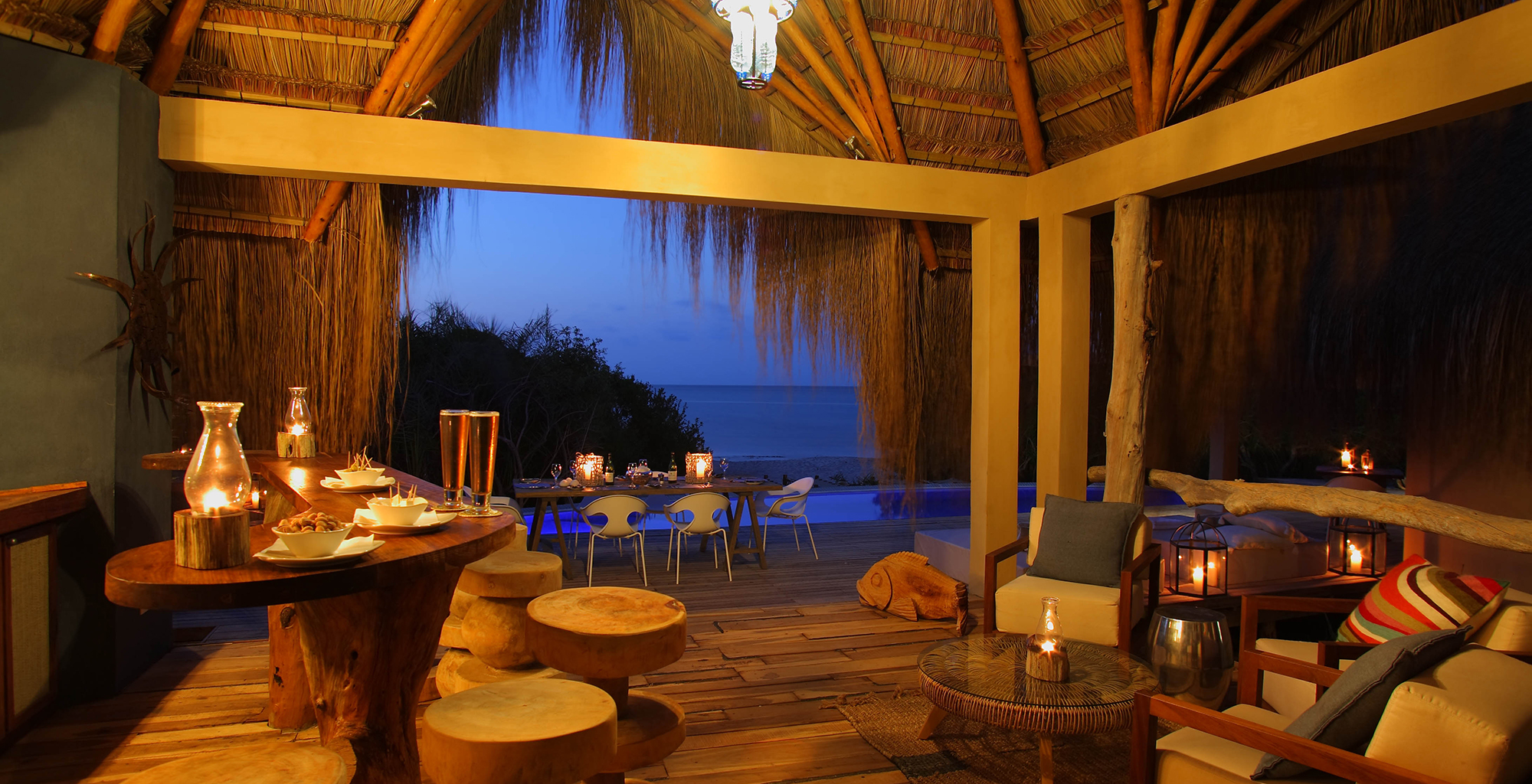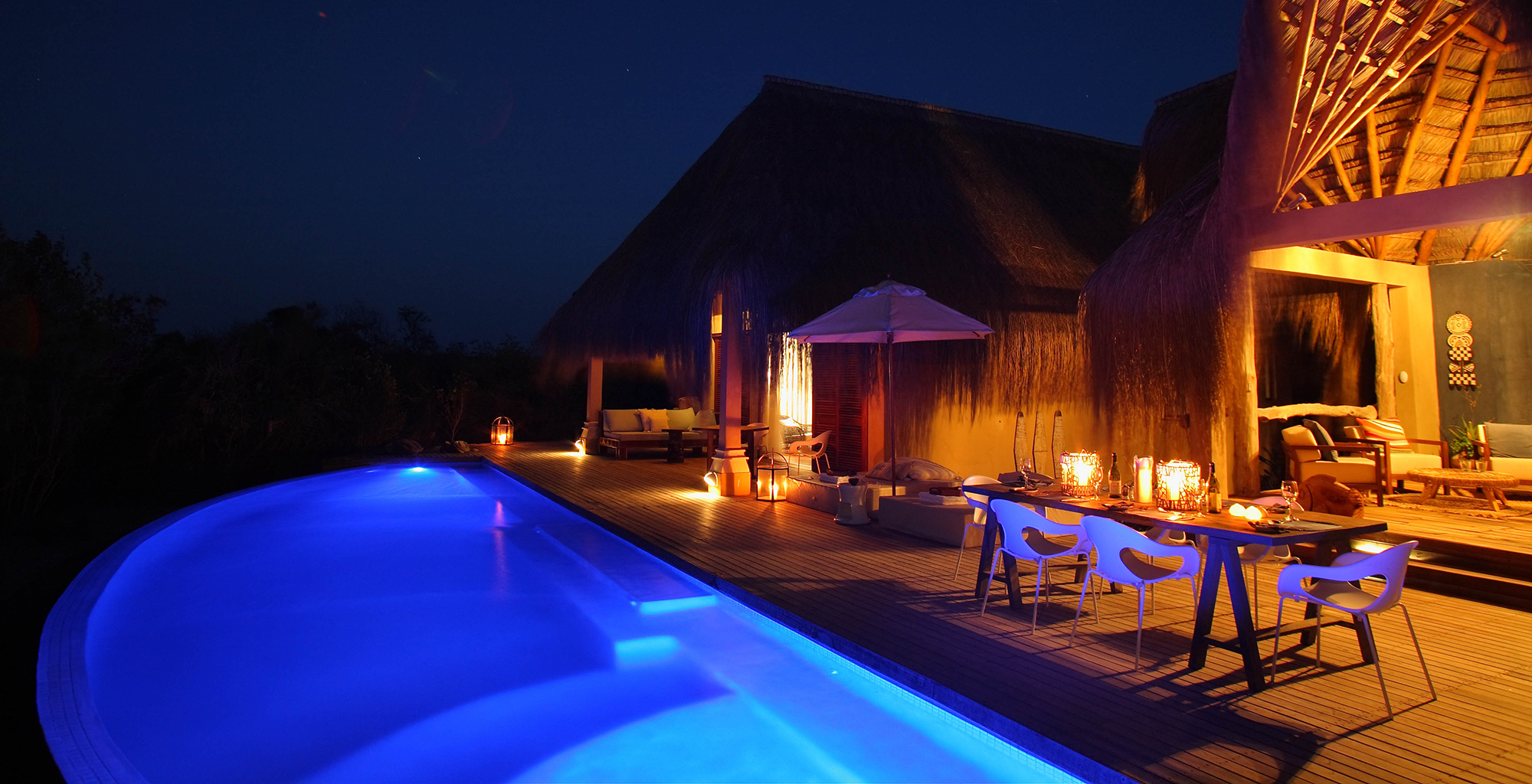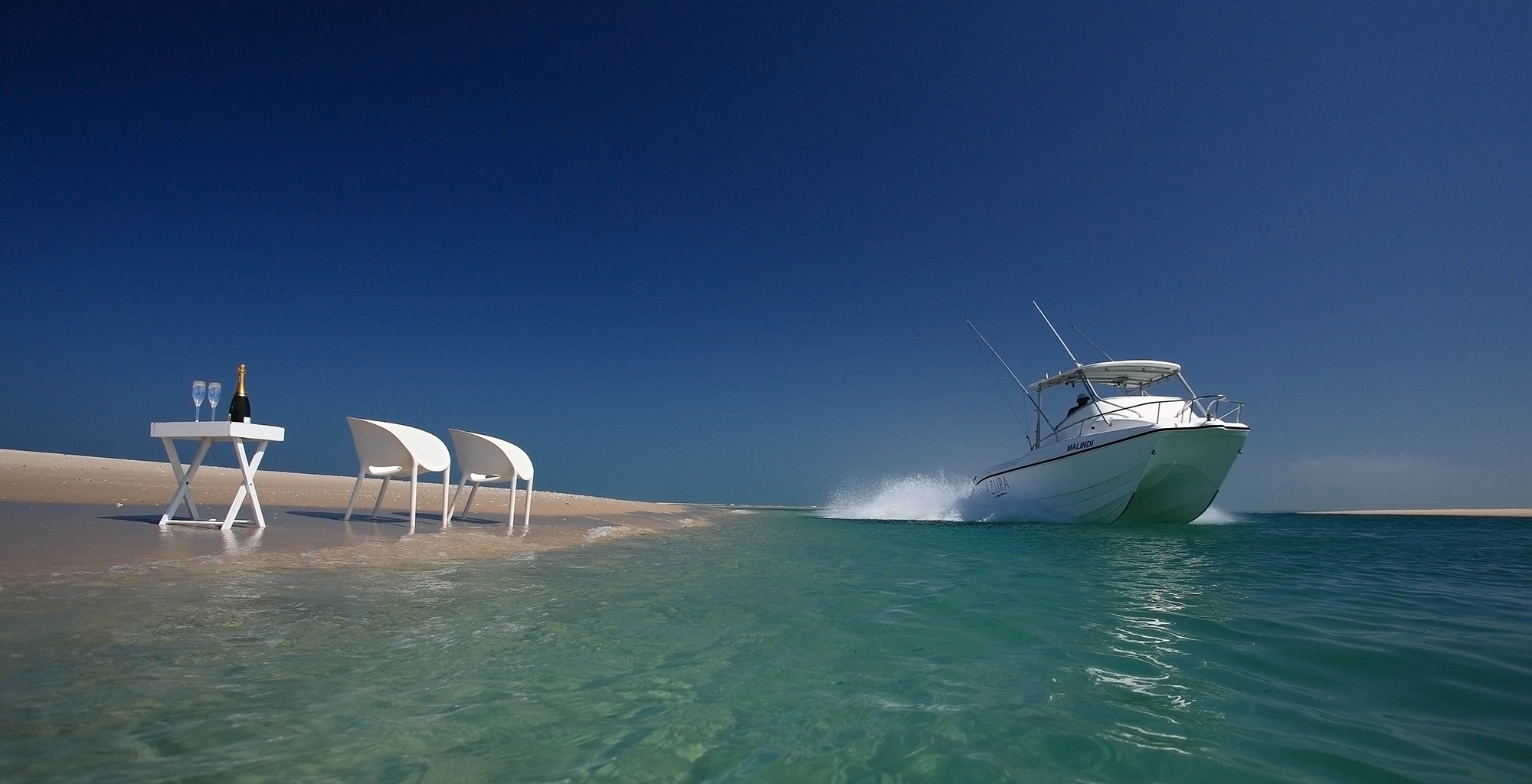The ultimate in beach luxury, with a prime location in Mozambique’s Bazaruto Marine National Park, the Azura Presidential Villa is Azura Benguerra‘s flagship property.
Overview
Situated on the beachfront, at a secluded end of the lodge’s grounds overlooking Bazaruto Dunes, the Presidential Villa is a stone, wood and thatch build consisting of 2 en-suite bedrooms, a staff bedroom, a lounge, dining area, bar, tree house, kitchen, extensive decking and infinity pool.
Set in a mature garden, designed and built along with the rest of the lodge, the Villa possesses the same distinctive thatch overhang, is linked by semi-hidden walkways and is characterised by vast and beautifully decorated interiors, wooden floors, a mix of traditional beach furniture, designer single mould plastic seating and an eclectic collection of lamps.
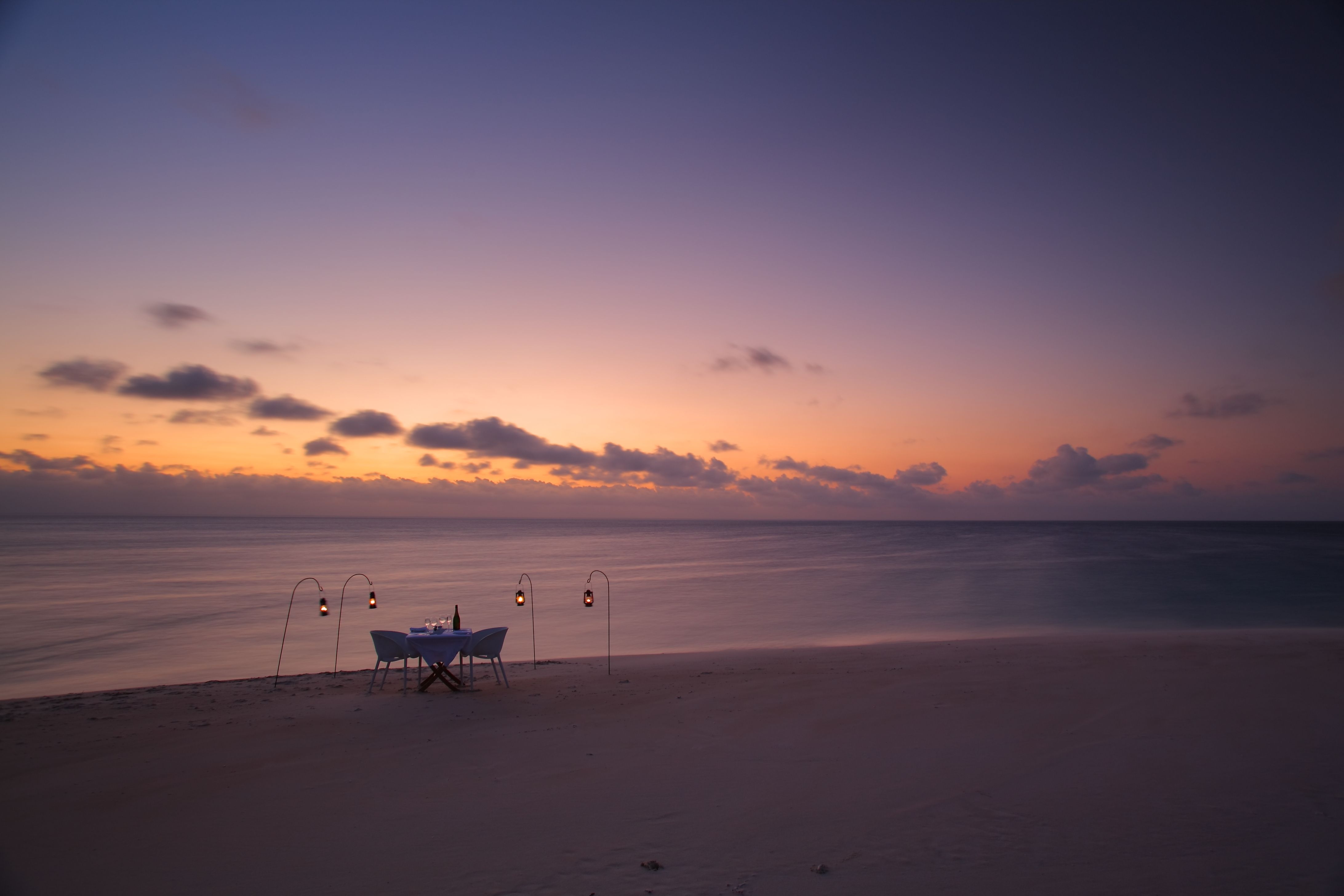
Food & service
As with the rest of the lodge, the service and food at the Presidential Villa is excellent. Given that each employee, from house host to private chef, holds a stake – economic, environmental and cultural – in the property’s success, guests are provided with the sort of personal service one might expect of an exceptional private house. The food is prepared in-house, special diets and tastes are easily catered for, and the cuisine is fish-based, with the produce locally sourced.
Rooms
The sleeping accommodation is divine. The split-level master bedroom is vast, includes a king-size bed, a seating area, decking, bathroom and a separate toilet. Like the rest of the Villa, the bedrooms decor is quite stunning – bone white slumber seating, a huge cube shaped mosquito net, the odd animal skin rug and acres of space. Equally fine, the second bedroom is exactly the same as the rest of the lodge’s infinity beach room collection. Including a king-size double or twin bed, comfortable seating area, separate bathroom, sun and undercover decking, beachside sala, plunge pool, fan and air-con, mini-bar and a coffee and tea station, the style of the room limits itself to quality functional objects, white walls and a beautiful wooden floor.
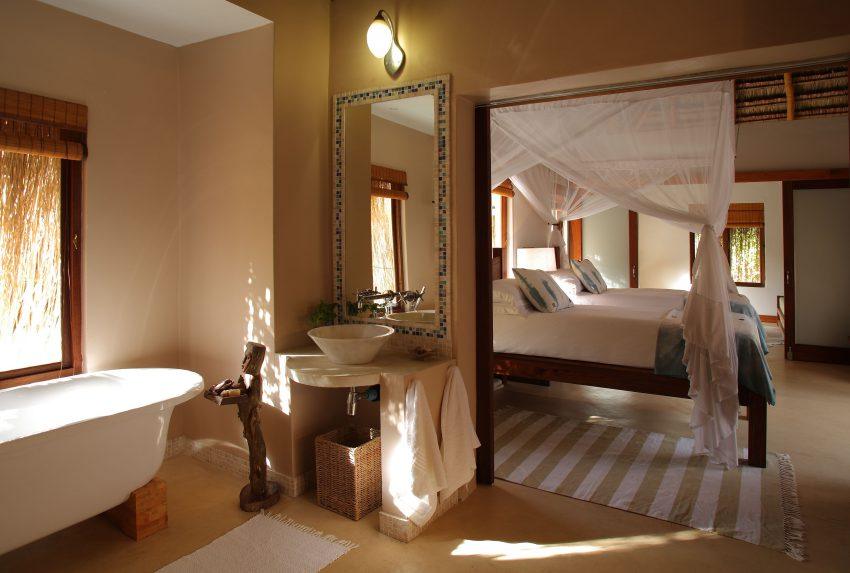
Activities
Activities at the Presidential Villa are exactly the same as those found in the rest of the lodge, only the itineraries are even more finely tuned to guests’ needs, the host service prepared for any eventuality or need. Activities include Red Dune and Crocodile Lake and South Beach excursions, visits to local community initiatives, island hopping, snorkelling, dhow trips, island picnics, diving, fishing, helicopter trips and star gazing.
Impact
Conservation
Azura’s biggest asset is its pristine location, and therefore safeguarding it is essential. As such, to keep from contaminating seawater, all ‘grey water’ from sinks and showers is used to water the retreat’s indigenous gardens, saving precious water as well as keeping the sea free of pollutants. All other waste water goes through the state-of-the-art treatment plant, and all washing is done with eco-friendly chemicals.
In-shore fish stocks and dolphin populations have been revived through Azura’s No-Fish Zone: an area of water where locals have agreed not to fish, in return for financial compensation
Commerce
The owners have meticulously made sure that every phase of the lodge’s construction promotes the local community’s social and economic prospects, and they also came up with the idea of using the construction of Azura as a hands-on method of training the locals in essential skills.
An environmental expert and a community specialist were on the ground before the first hand-made brick was even laid, and such effort was made to use local materials that the sea was scoured for coconut trees blown over by a recent cyclone for use as beams and frames. Local women were invited to provide the Jekka that forms Azura’s iconic thatched roofs, and local dhows were used to bring in anything that did have to be imported, such as the water treatment plant, which ensures the surrounding seawater remains unblemished.
Community
Funds collected from the lodge’s registered charity, The Rainbow Fund, have been used to build the area’s first school; increasing the amount of local children in education tenfold, from 40 to 400.
